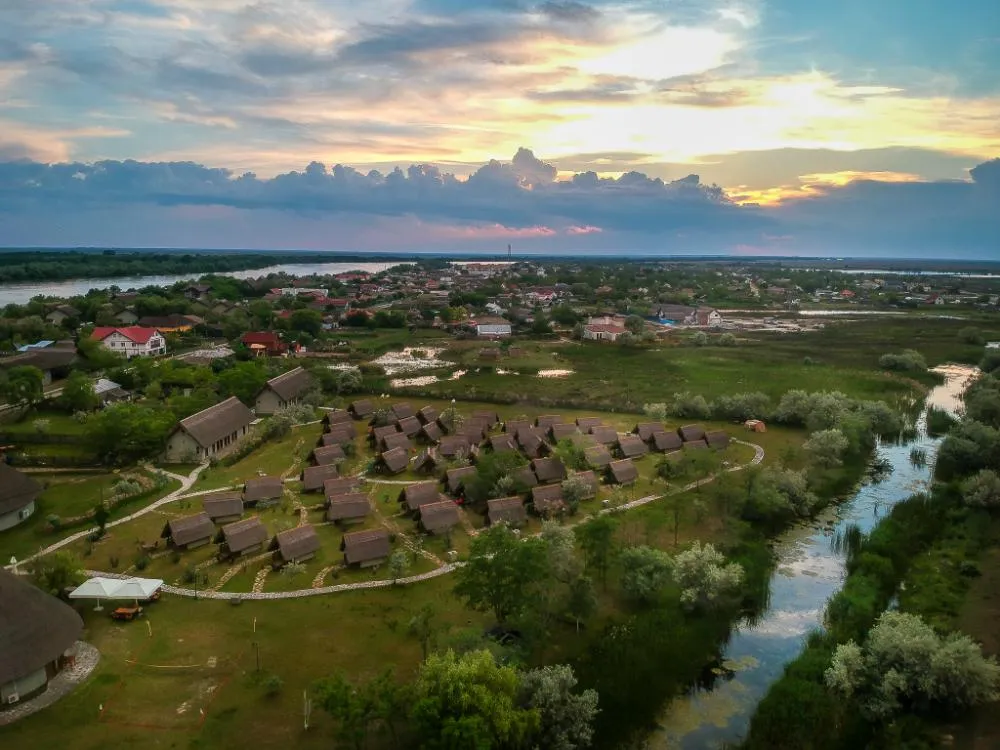Cuprins
The Danube Delta is an ideal destination for explorers, nature lovers and outdoor enthusiasts, as well as for families with children.
Before you arrive in this natural paradise, it’s important to inform yourself so you can really enjoy the attractions of the Danube Delta.
Discover an article in the form of an exploration guide, with information about the Danube Delta and many curiosities.
Let’s get started!
Information about Danube Delta
In the following lines you will find information about the Danube Delta Romania, from how it is formed, the fauna and flora of the Danube Delta, what are the tourist attractions and what activities you can do, to curiosities about this wonderful place of our country. So if you’re looking for information about the Danube Delta for children and only children, you’re in the right place.
How the Danube Delta was formed
The Danube Delta was formed by the permanent action of the Danube River, which flows through our country, entering through the town of Baziaș (border with Serbia) and flowing into the Black Sea.
The Danube has created a unique delta, with three main arms through which it flows into the Black Sea. The arms of the Danube are Chilia, the longest arm, Sulina, a fully navigable arm, and Sf. Gheorghe, the oldest arm. At the Gura Portiței in Sulina, the only town in the Delta, you will see this spectacular spill best. So you shouldn’t miss the place where the Danube flows into the Black Sea.
The sediments of the Danube (sand, gravel, mud and soil) formed what we can explore today. Because the Danube is a fast-flowing river, the second longest in Europe, the Delta is constantly expanding and shaping. You will find below that the Delta’s surface area is constantly increasing.
How the Danube helped shape this natural paradise, read general information and curiosities about the 👉 Danube River.
When the Danube Delta was formed
The sediments brought by the Danube began to form in the post-glacial period, more than 10,000 years ago. The deposition of sediments was possible because the Black Sea would have been characterised in the past by a bay enclosed by a sandy barrier beach. This physical-geographical aspect contributed to the formation of the Danube Delta.
Today, the Danube Delta, together with Sacalin Island, is the newest Romanian and European land.
Surface area of the Danube Delta
The Danube Delta (together with the Razim-Sinoe lagoon complex) covers 5,500 square kilometres, making it the second largest delta in Europe. Interestingly, its area is constantly increasing, by about 40 square metres per year. About 80% of the delta is in Romania, and the rest in neighbouring Ukraine.
The Delta area is divided into several zones as follows:
- Strictly protected areas, where tourist access is prohibited or limited;
- Buffer zones, where tourist activities are allowed, but under protection and conservation regulations;
- Economic zones, where economic and recreational activities are carried out under sustainable development rules.
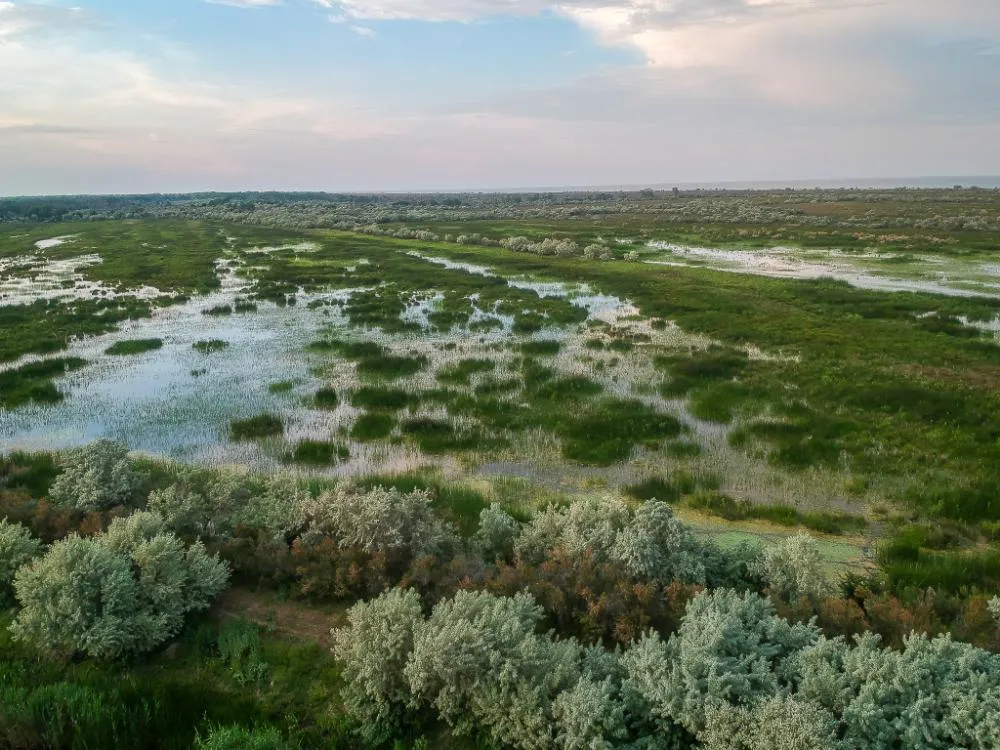
Danube Delta Climate
The climate of the Danube Delta is temperate continental steppe, directly influenced by the proximity to the Black Sea. In principle, winters are mild and summers are not extremely hot. Humidity levels are high and solar radiation is high. So sun protection is very important when visiting the Danube Delta. In fact, Sulina is the sunniest place in Romania.
The wind, which blows mainly in spring, is a natural phenomenon characteristic of the Danube Delta, as is the fog in autumn.
Residents of the Danube Delta
The lowest population density in Romania is found in the Danube Delta. We’re talking about one inhabitant per 30 hectares. The total population is around 27,000, with more than 20% living in the town of Sulina and the rest in the 28 fishing villages. The Romanian, Russian-Lipovian, Ukrainian and Turkish communities live together harmoniously.
The lifestyle of the Delta’s inhabitants is linked to the area’s resources. Fishing and farming are the main occupations of the inhabitants. Tourism and related activities are also important to people’s livelihoods. However, tourism also brings with it less pleasant aspects, which is why limiting certain recreational activities is beneficial to the sustainability of the natural environment found here.
Traditions are preserved from generation to generation, being a true cultural treasure of our country. For example, holiday traditions are observed through carols and traditional dishes.
In terms of culinary traditions, fish borscht, fish plate, carp stew, brine and squeezeagul are some of the most appreciated and hard to match gastronomic dishes.
The Danube Delta and UNESCO protection
The Danube Delta has been a UNESCO World Heritage Site since 1991. Classified as a biosphere reserve, it is protected under the Ramsar Convention as a wetland of international importance.
Therefore, visiting the Danube Delta is done through forms of ecotourism activities that protect and preserve the natural environment here.
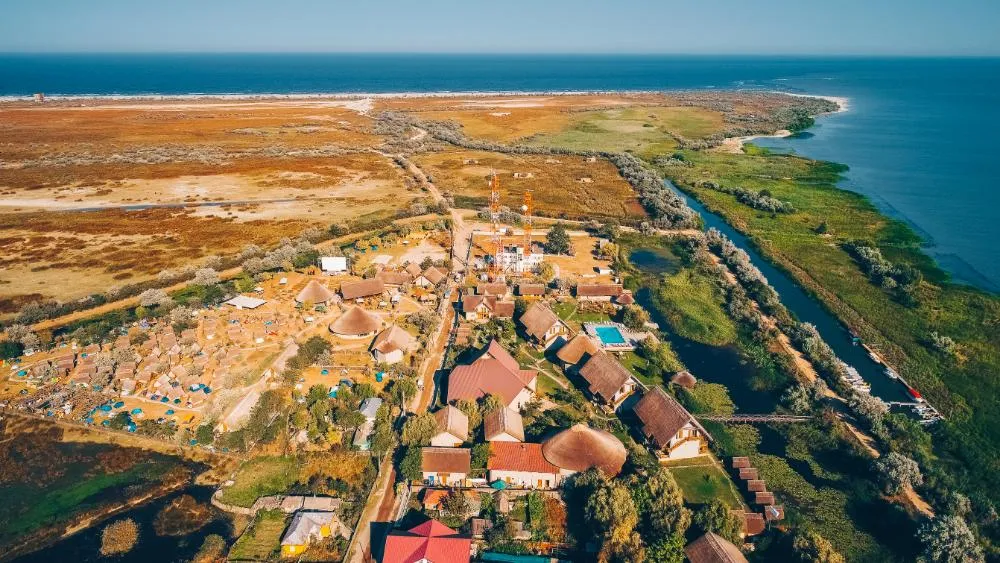
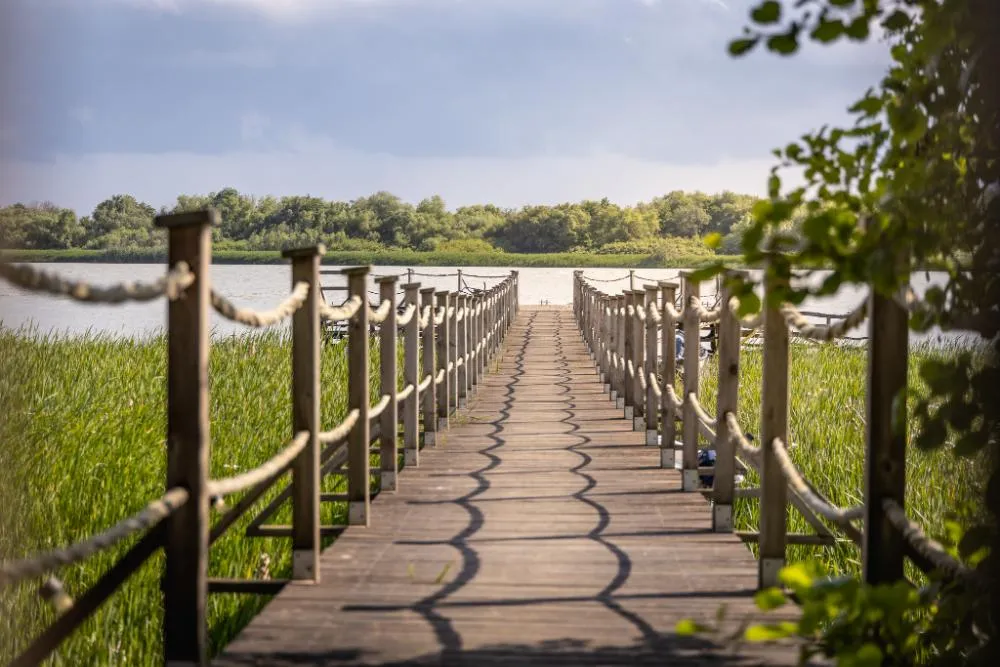
Danube Delta map
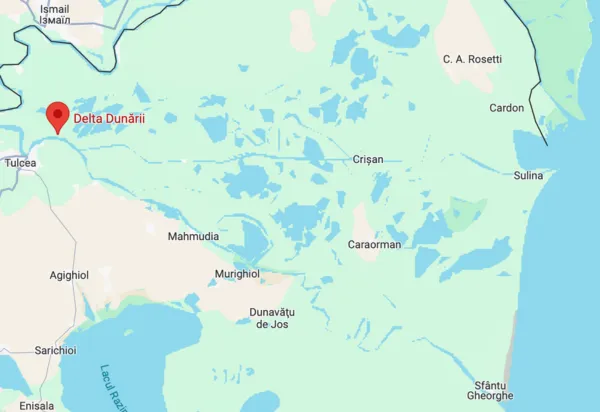
Where is the Danube Delta? It is located in south-eastern Romania, in Tulcea county, and is made up of a complex network of inlets, canals, lakes and marshes, as well as areas of land. Most of the Danube Delta is located in Dobrogea, Romania, and partly in Ukraine.
The importance of the Danube Delta is a determining factor in terms of biodiversity at European level, as it is considered a natural paradise requiring special protection and conservation.
Danube Delta Attractions
We continue with information about the Danube Delta, reaching its tourism potential.
The Danube Delta is one of the most beautiful places to visit in Romania. It’s worth coming here at least once in your life!
For these very reasons, this destination should be known as well as possible to enjoy its beauties. Undoubtedly, the rich biodiversity has the greatest potential among nature lovers, but you will find that there are other types of tourist attractions to tick off.
Here’s what you can do in the Danube Delta:
- As for the Danube Delta nature reserves, the Letea Forest is a unique ecotourism experience with its lush vegetation, sand dunes and, of course, herds of wild horses;
- Also as a special ecotouristic experience, the Caraorman nature reserve is characterized by the desert-like landscape and the ancient oak trees. For example, the “kneeling oak” is believed to be over 400 years old;
- Fishing villages to visit: the village of Sf. Gheorghe, with its wild beach, the village of Crișan, the villages of Jurilovca and Sarichioi, with their traditional fishermen’s houses painted in blue, Mahmudia or Uzlina – among the wildest fishing villages in the Delta;
- As for the lakes, Matița is fascinating, being entirely covered with aquatic plants. It is a favourite with pike fishermen and tourists who want to admire the biotope of the Delta. Lake Rosca is known for its impressive colony of white pelicans, Lake Rotund is home to cormorants, the Litcov canal (between Sulina and Sf. Gheorghe) is the route where you can admire traditional fishing houses, and Lake Gorgova is among the largest lakes in the Danube Delta. Also, a trip to Musura Bay to see the sunrise is an unforgettable experience;
- The sunset trip on the Crișan – Mila 23 route is recommended especially for romantics;
- The Razim-Sinoe lagoon complex, with an area of more than 100,000 ha, consisting of several coastal lakes connected to the Danube and the Black Sea;
- Visit Gura Portiței, where you can see how the Danube and the Black Sea meet. You can also take a swim here;
- As gastronomic attractions, the traditional fishermen’s meals, including the famous fish borscht cooked over a fire, carp roe, lipovenek brine or catfish plate, are not to be missed. Try the wines of Dobrogea. You can experience a ‘clacă pescărească’, with food, traditional music and interesting stories from the Delta;
- To discover the culture and lifestyle of the Lipovians, Mila 23 is the destination to have on your shortlist;
- Traditional Russian and Ukrainian music in villages such as Sarichioi or Mila 23. Such ensembles can be found at various times of the year, on holidays or at local events;
- Stipoc Monastery is the only monastery in the Danube Delta with access only by water. Here you’ll find a wooden church built in the Moldavian style, surrounded by lots of flowers;
- Aspects of fishermen’s life in the Danube Delta can be seen by visiting the Fisherman’s House Museum in Mahmudia;
- The traditional fishing boat is the lotca, a means of transport for the locals. In this respect, the Museum of the Anglerfish at Mila 23 is a floating tourist attraction worth visiting.
The Danube Delta is a unique landscape in our country, in which the connection with nature occupies an essential place.
At Dolphin Camping you have 👉 types of accommodation available, depending on your preferences.
In addition, we are waiting for you with an open-air cinema and various games to spend your time in our camping area.
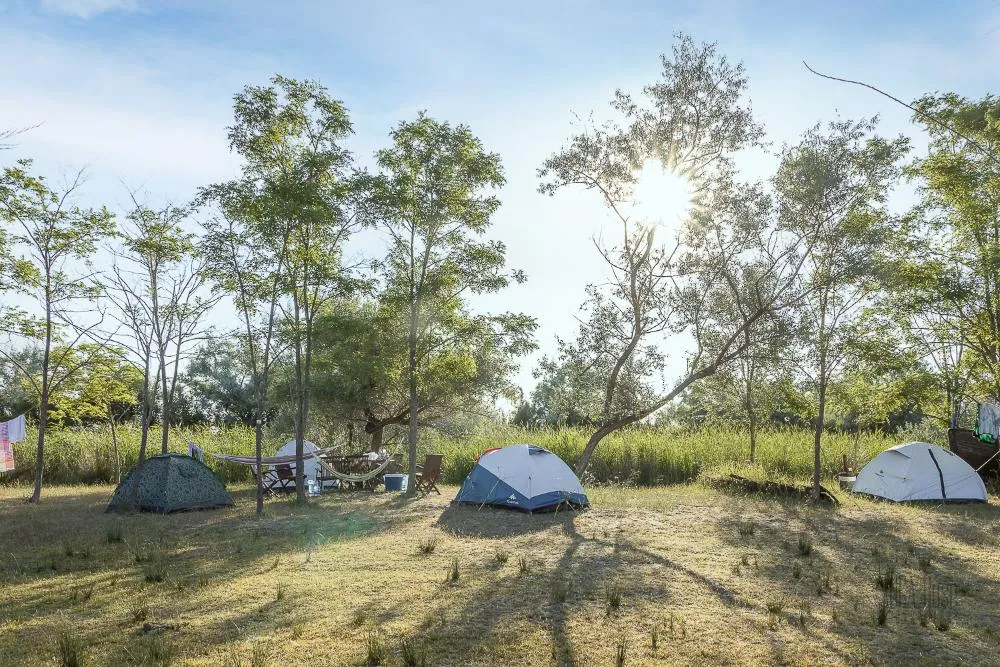
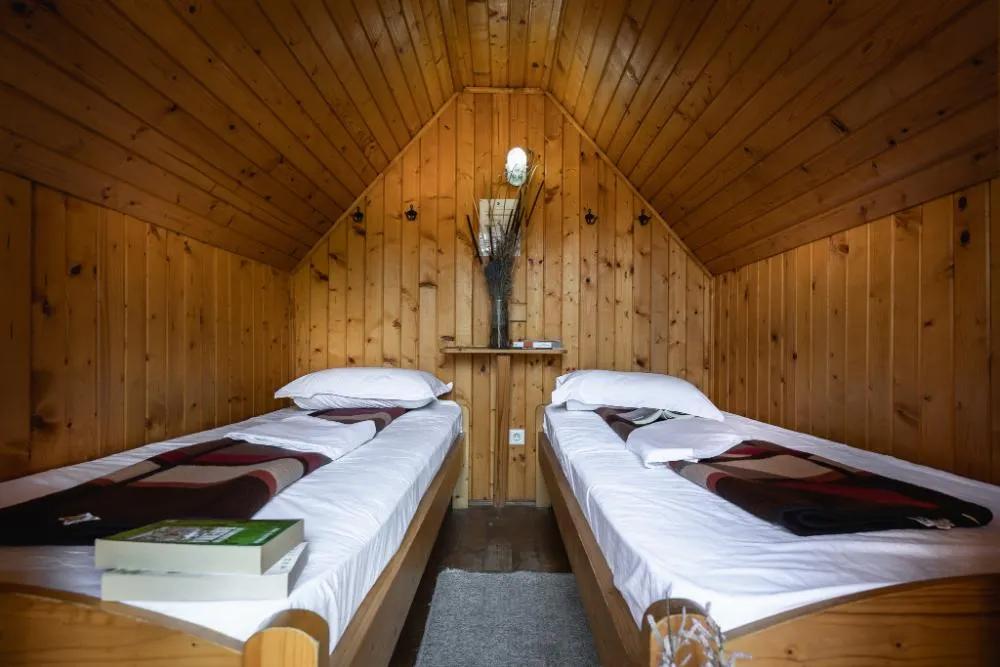
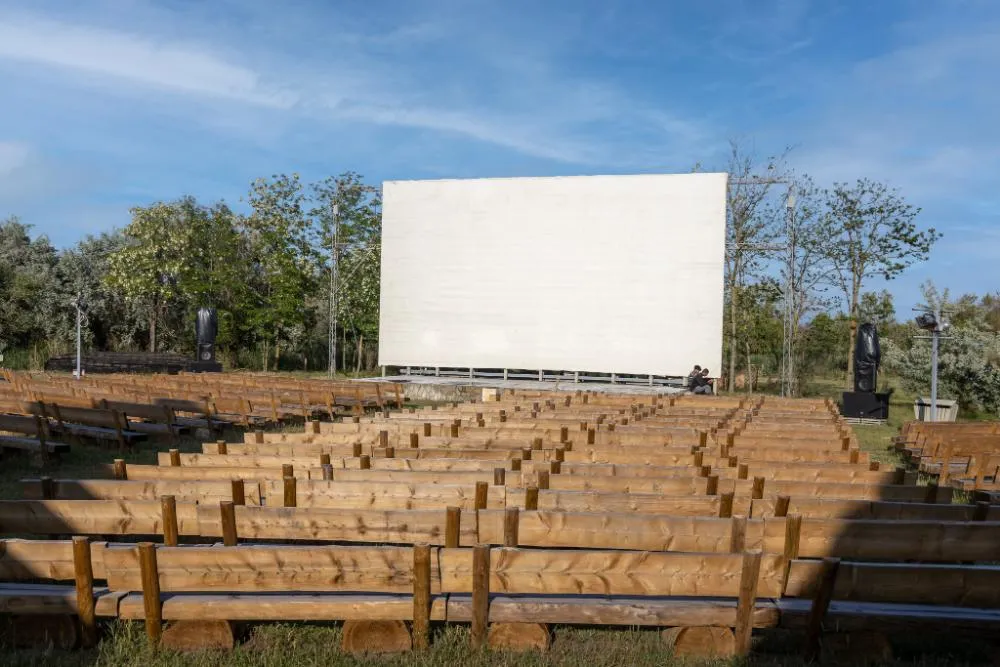
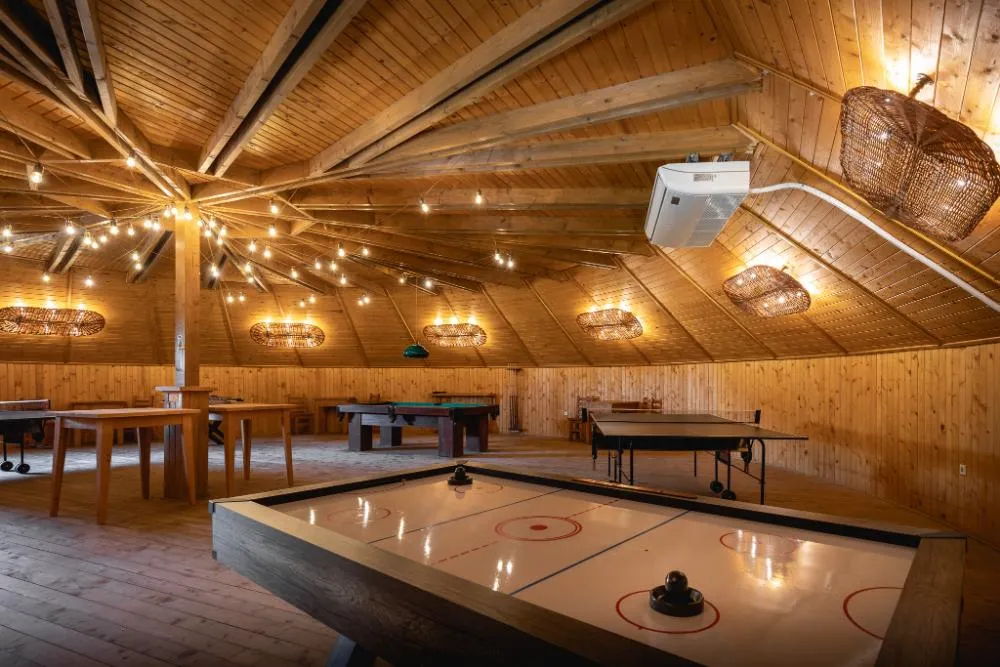
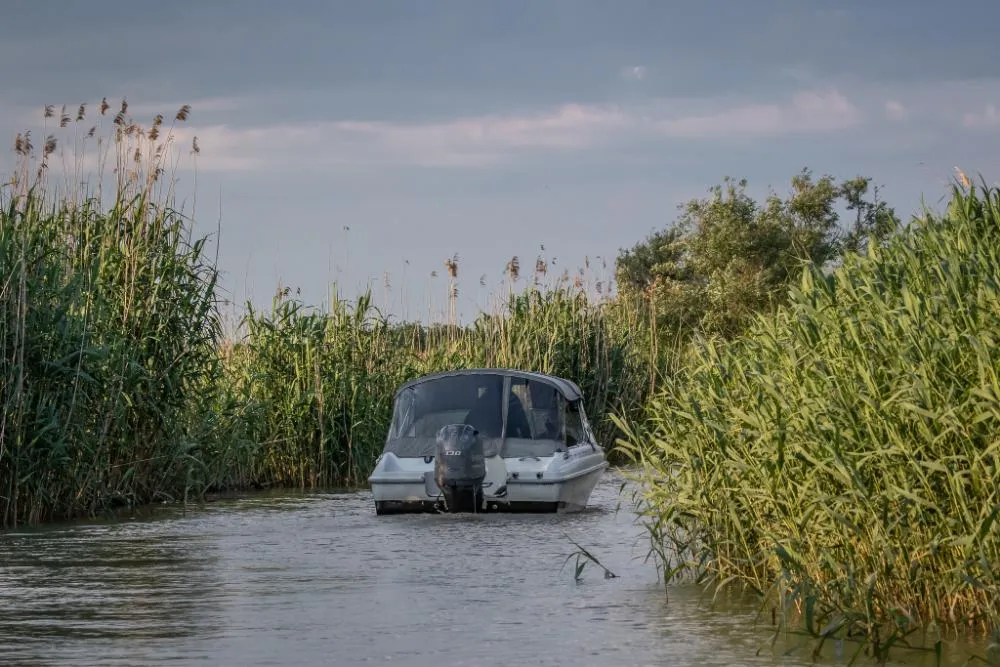
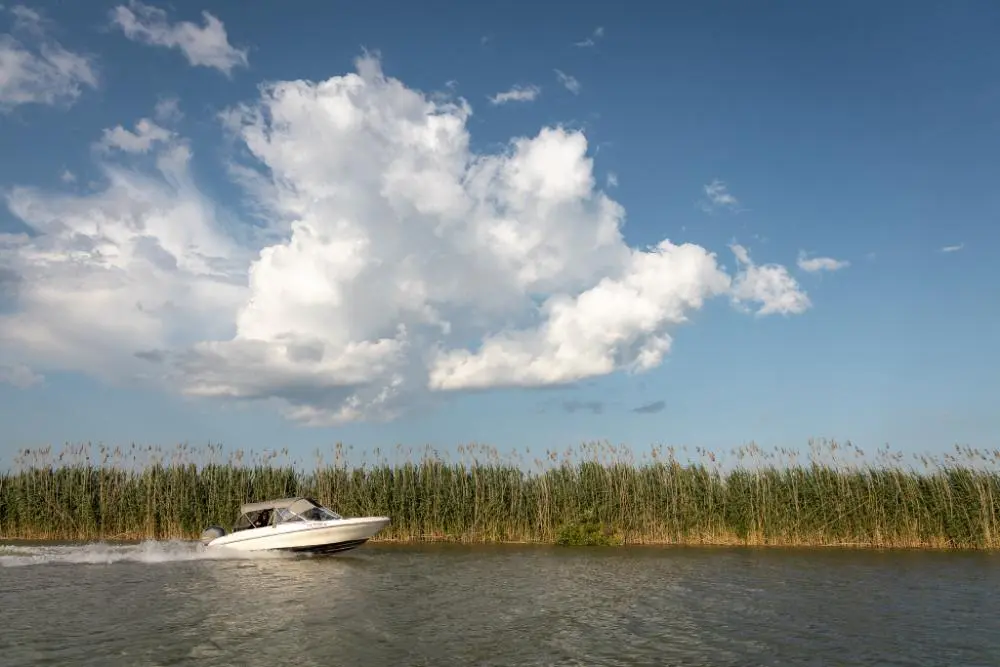
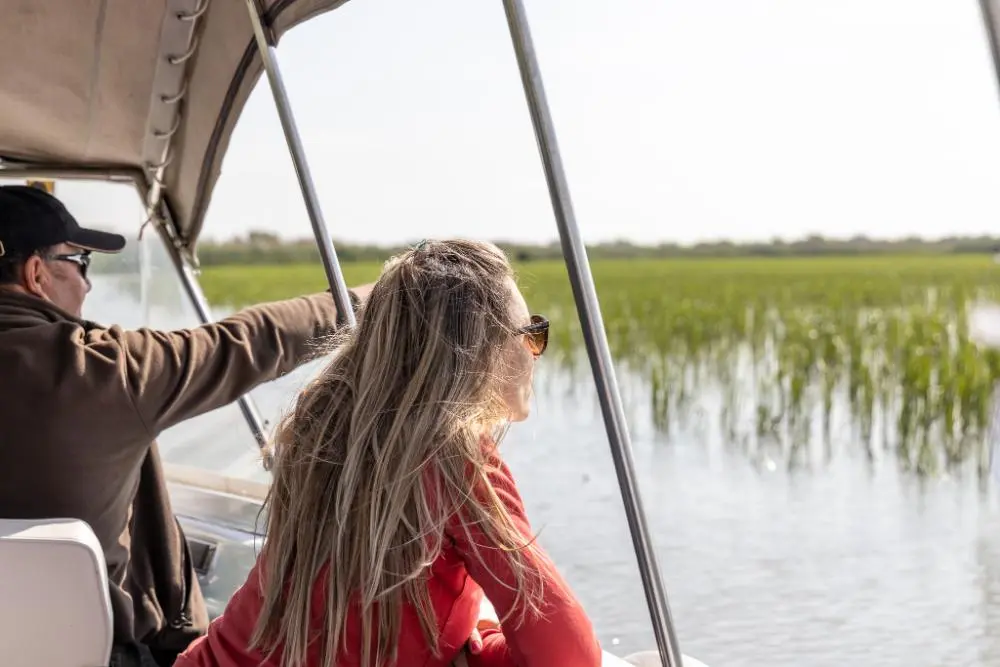
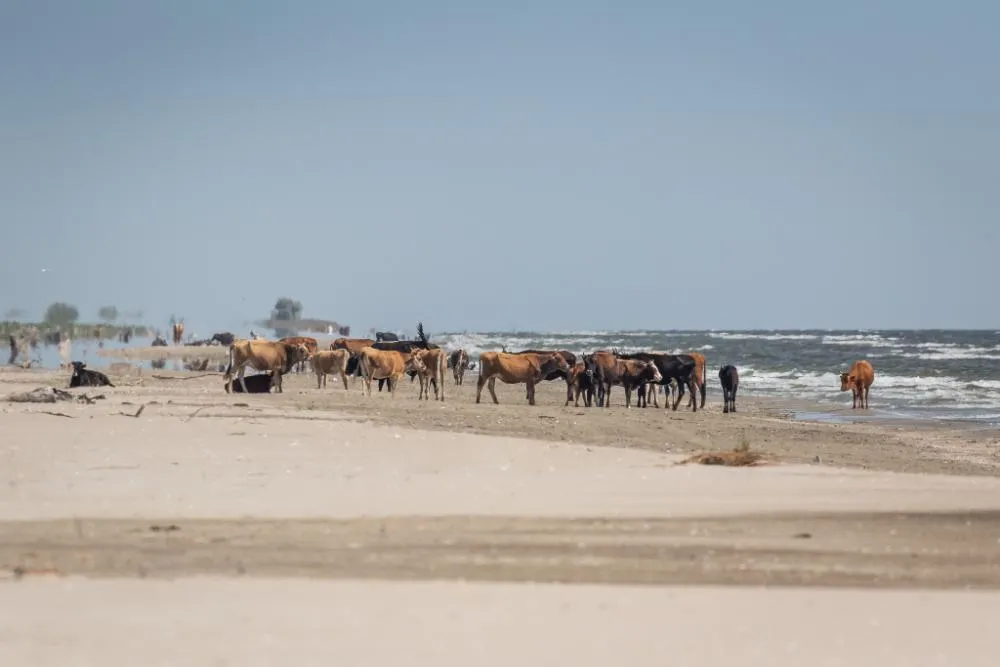
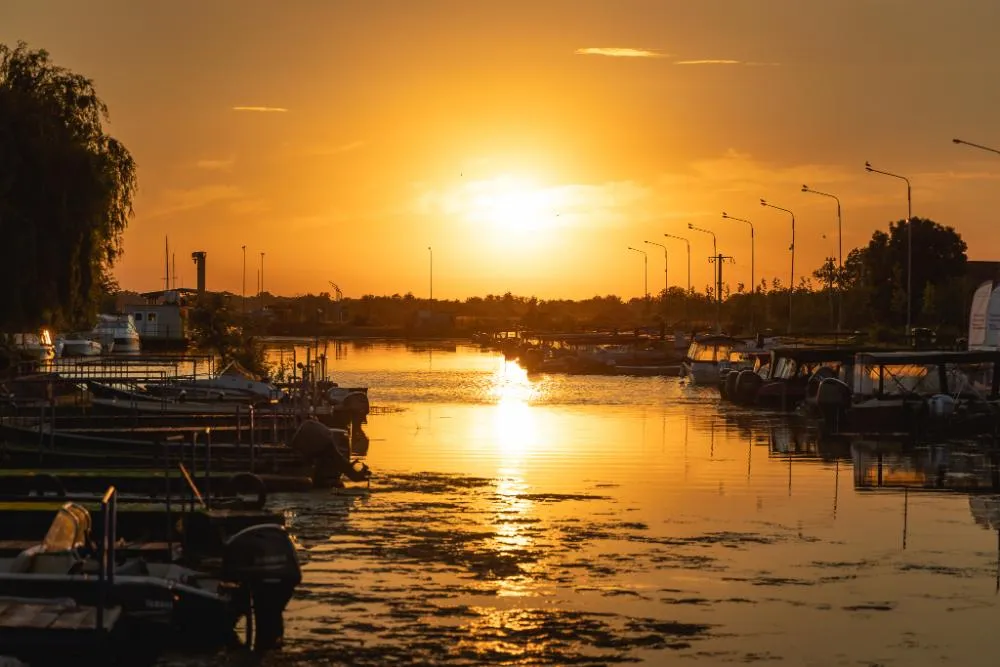
In the following lines, you will discover information about plants and animals of the Danube Delta.
Animals of the Danube Delta
Considering the small area of land, the Danube Delta’s fauna is mainly represented by species adapted to the aquatic environment. These include fish, amphibians, reptiles and birds, as well as mammals.
More than 130 species of fish live in the waters of the Delta. The most representative fish are the moray eel, the mullet, the red bream, the Danube scabbard fish (when spawning), the carp, the pike, the catfish, the perch, etc.
There are also 10 species of amphibians. The Dobrogea tortoise is specific to the area and the only venomous snake species is the steppe viper.
The birds, numbering over 340 species, are much sought after and admired by visitors to the Danube Delta. In other words, the Delta is home to 80% of Romania’s birdlife.
The most common bird species are water birds such as the gull, egret, swan, cormorant, duck, white stork, crane, crested pelican, etc. Most birds in the Delta are migratory. The largest bird of prey is the coot. In 2007, the Danube Delta was declared a Special Protection Area for Birds.
Danube Delta mammals are generally small and adapted to aquatic environments. The most obvious examples are otters, minks and otters. Also found on dry land are wild boars, badgers, foxes, rabbits and deer.
Towards the mouth of the Danube, in the Sulina area, several species of dolphins were also encountered. However, they are rare here, preferring the waters of the Black Sea. Molluscs, such as snails and clams, and crustaceans, such as crayfish and crabs, are also part of the Delta’s fauna.
The fauna of the Danube Delta is therefore among the richest and most varied on the European continent.
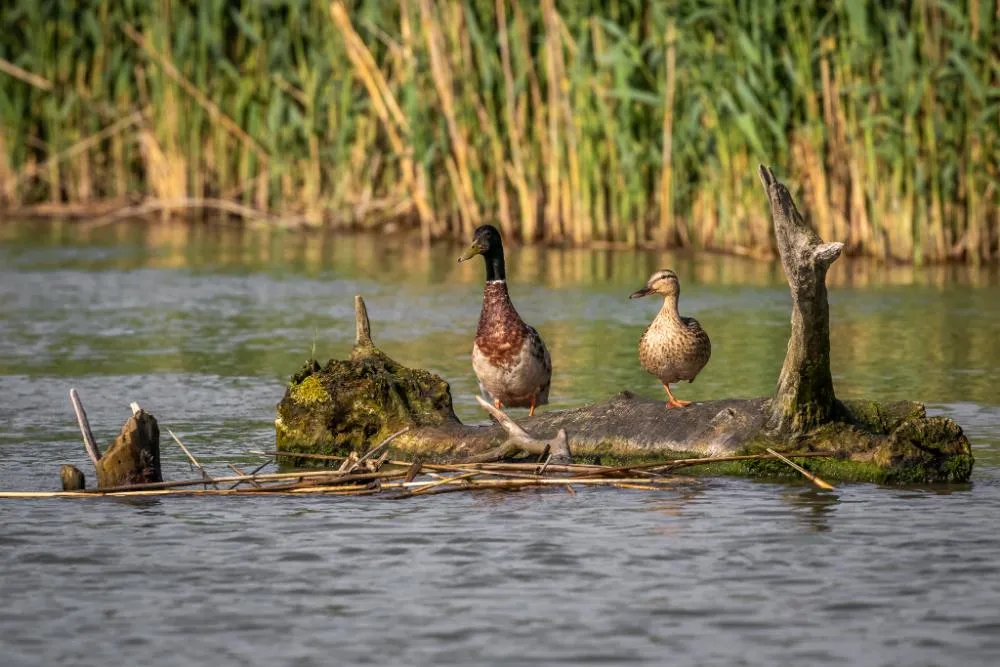
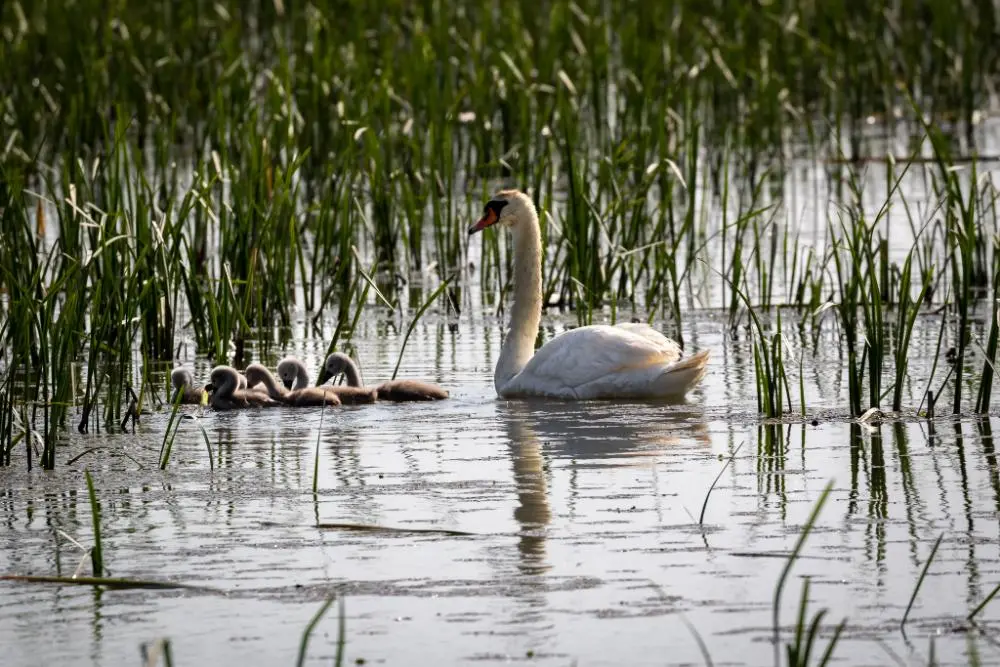
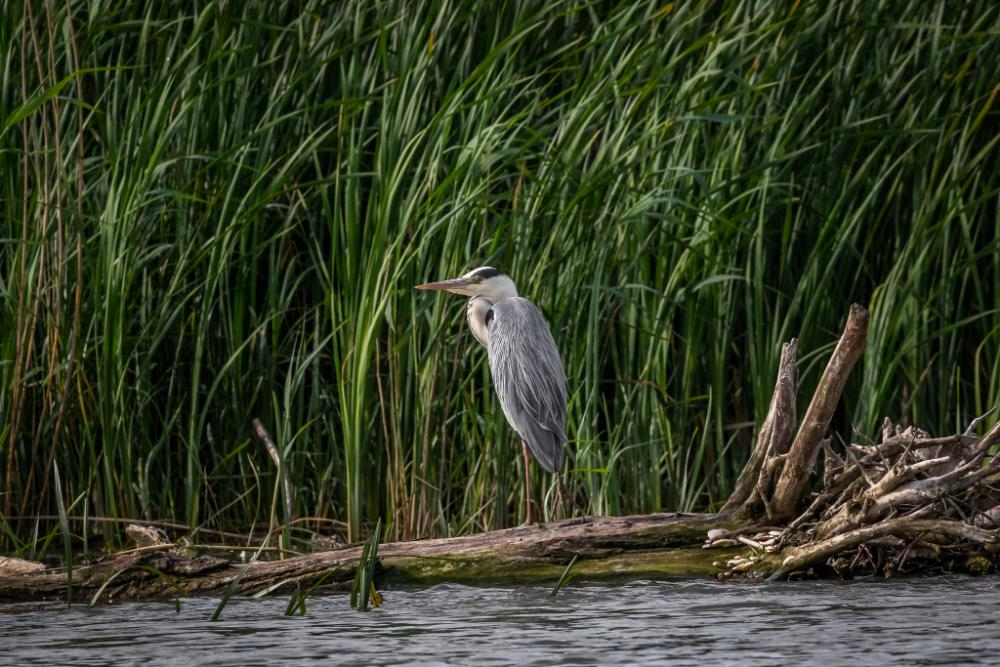
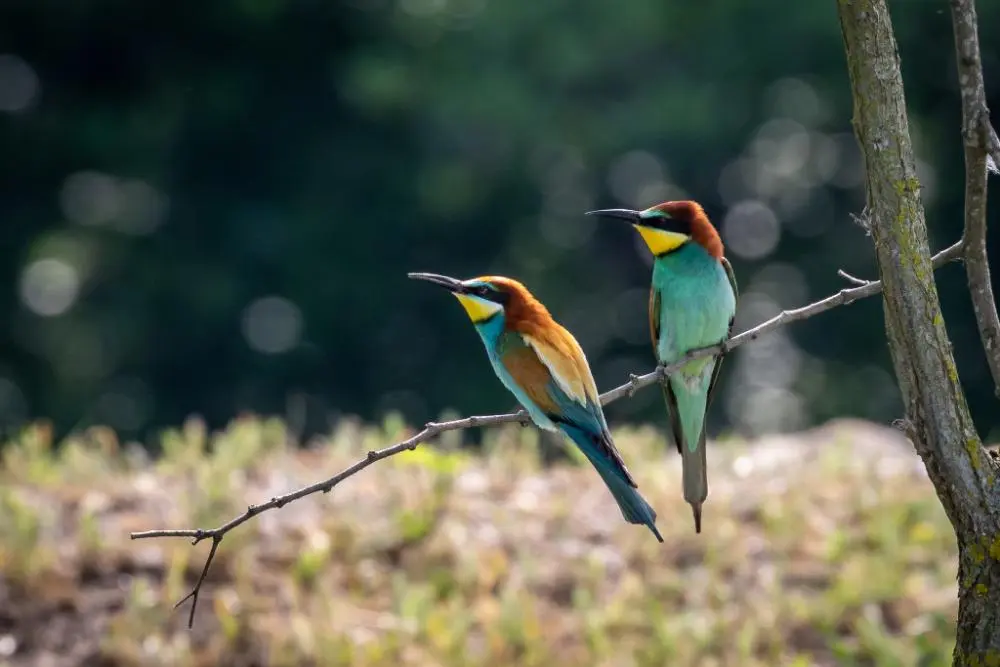
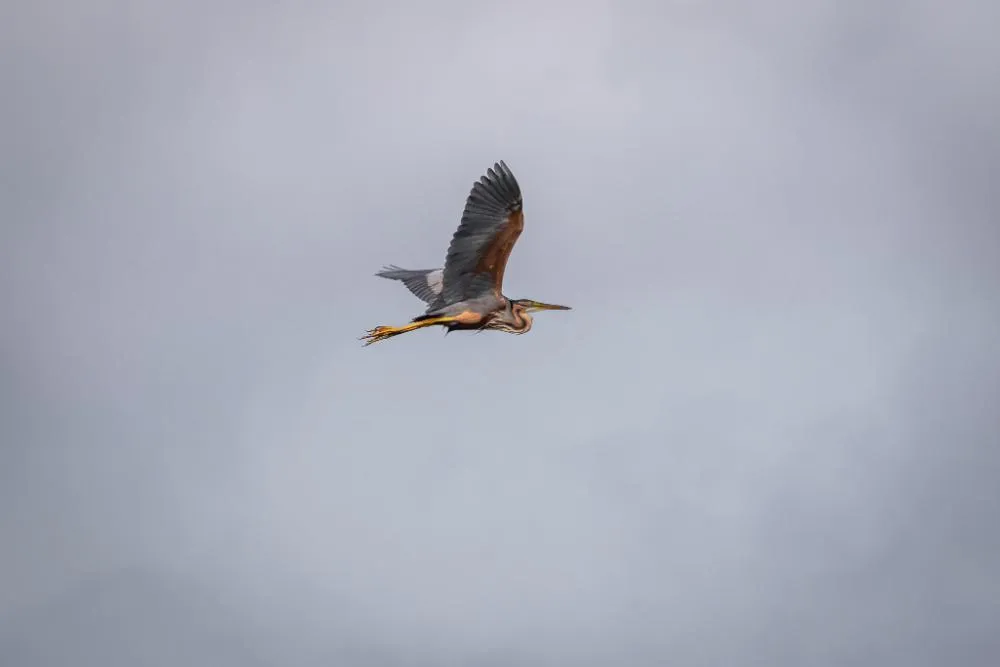
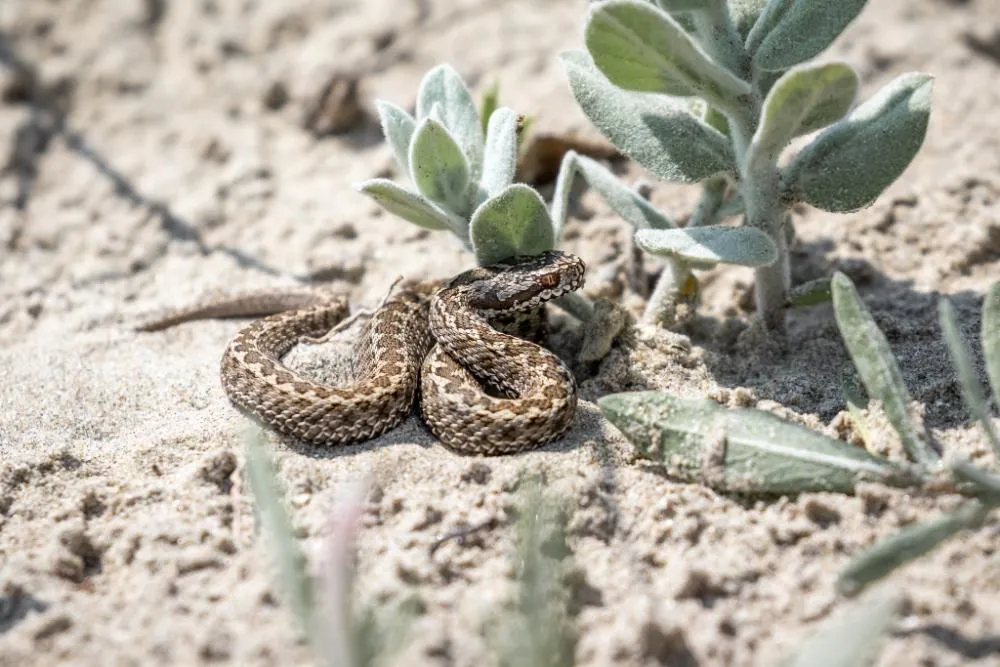
Plants from the Danube Delta
Whatever the season, the flora of the Danube Delta is a true spectacle of nature.
A high proportion, almost 80%, of the vegetation is specific to wetlands. The plants in the Danube Delta are therefore represented by reed canary grass, plains, reed canary grass, reed canary grass, pipirig and dwarf willow. The reed beds are a type of floating vegetation specific to the entire Danube Delta.
There is a wide variety of water lilies along the navigation channels. To admire the spectacle of the water lilies, visit the Delta between June and September. This is when the white and yellow water lilies are in bloom.
On the river beams you will see various trees and shrubs such as white poplar, black poplar, horse chestnut, blackberry bushes, etc.
In the Danube Delta there are also two carnivorous plants, the aldrovanda and the pondweed.
Letea Forest is one of the most beautiful places in terms of lush subtropical vegetation. The natural landscape found here is unique, with sand dunes, dry oak groves, many species of orchids and a species of vine that can reach up to 20-25 metres in length.
The Caraorman Forest also has a special ecosystem, with tree species such as ancient oaks, ash trees and palms that anchor the sand dunes.
In the Danube Delta nature reserves there are also unique plant species. For example, the black maple, found in the Erenciuc reserve, grows only in this part of Europe. The fangflower and the water spirea are also rare protected plants.
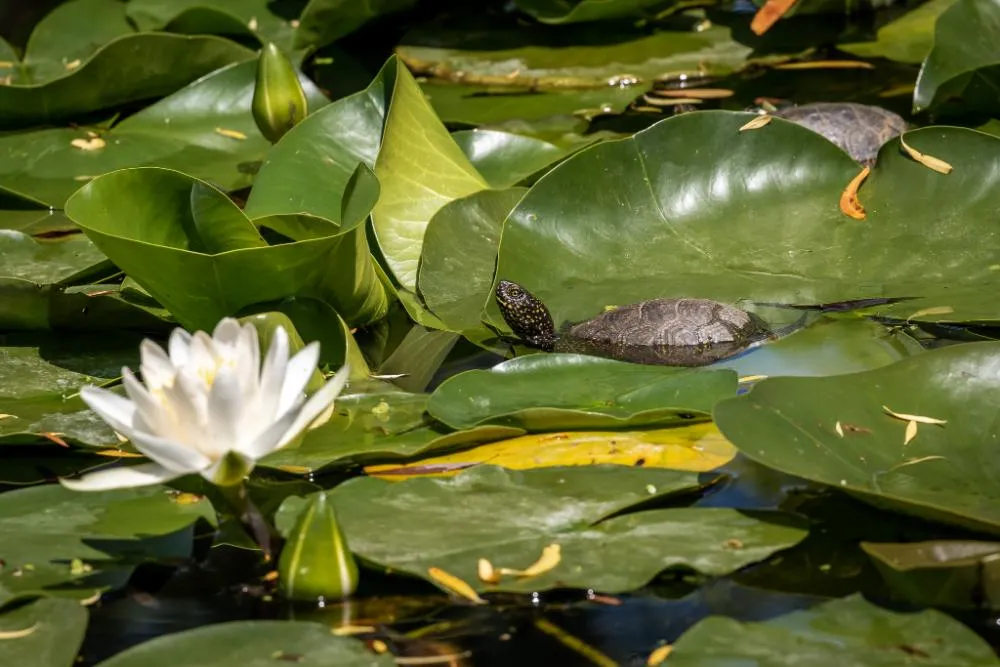
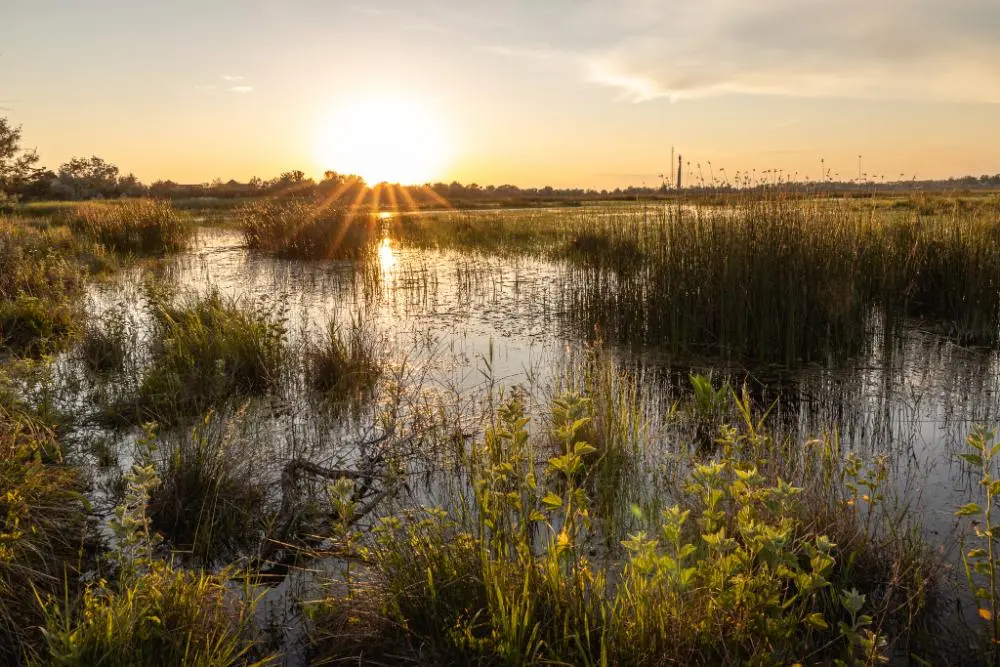
Recreational and adventure activities in the Danube Delta
In the Danube Delta you can do a lot of outdoor excursions, outdoor activities being a staple in this unique destination in our country. Each channel or branch is unique and has its own beauty.
The Danube Delta is for explorers of all ages. It is therefore the ideal destination for those looking for wild natural places, groups of friends with a spirit of adventure (including teambuilding), and last but not least, families with children looking for interesting recreational activities.
Depending on your preferences, you can consider the following types of recreational and adventure activities:
- Trips on the canals and lakes of the Delta;
- Water rides on kayaks or SUP’s;
- Recreational fishing;
- Birdwatching, here is a true bird paradise;
- Wagon ride through the Letea forest;
- Walk through the fishing villages on foot or by bike;
- Participation in a fisherman’s cheer, with music, stories and specific food.
The spectacle of the Danube Delta can be seen from inlets, canals and lakes. We’ve prepared several 👉 boat trip experiences for you to book online.
Here are some pictures of the Danube Delta capturing the main recreational activities:
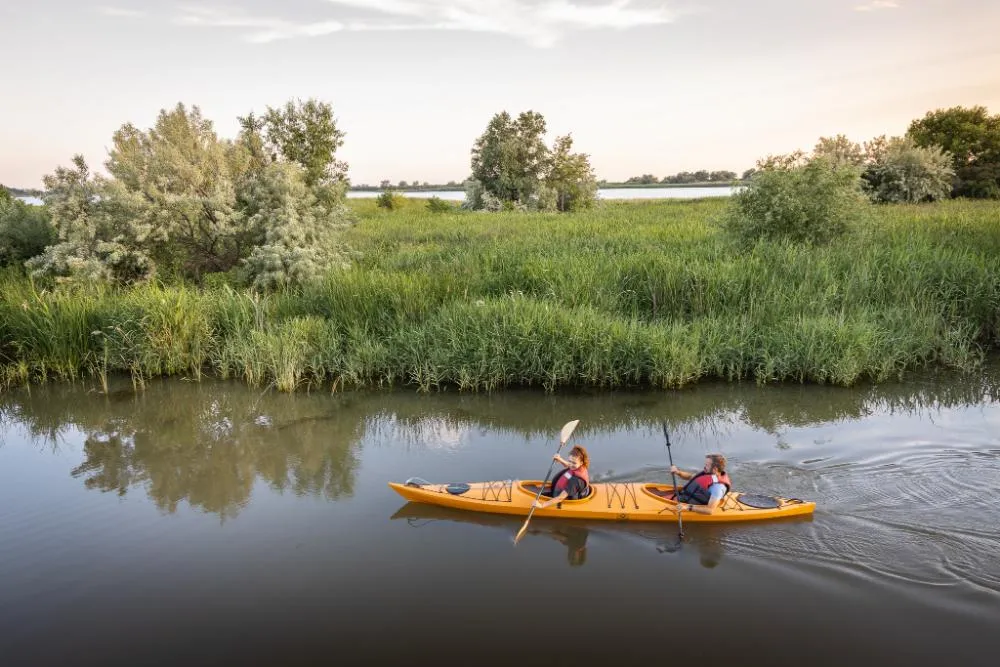
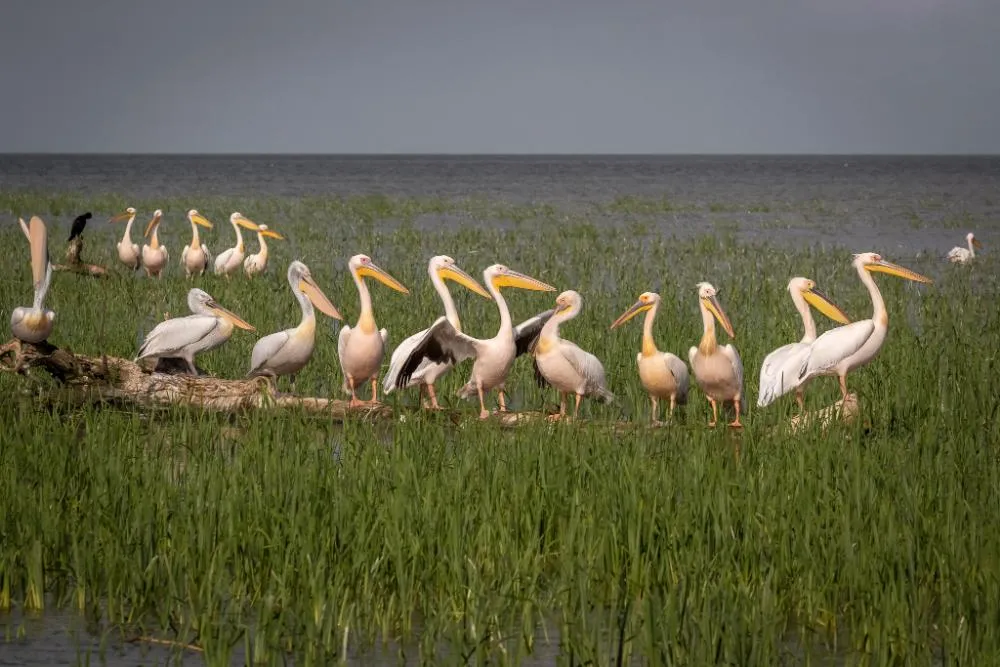
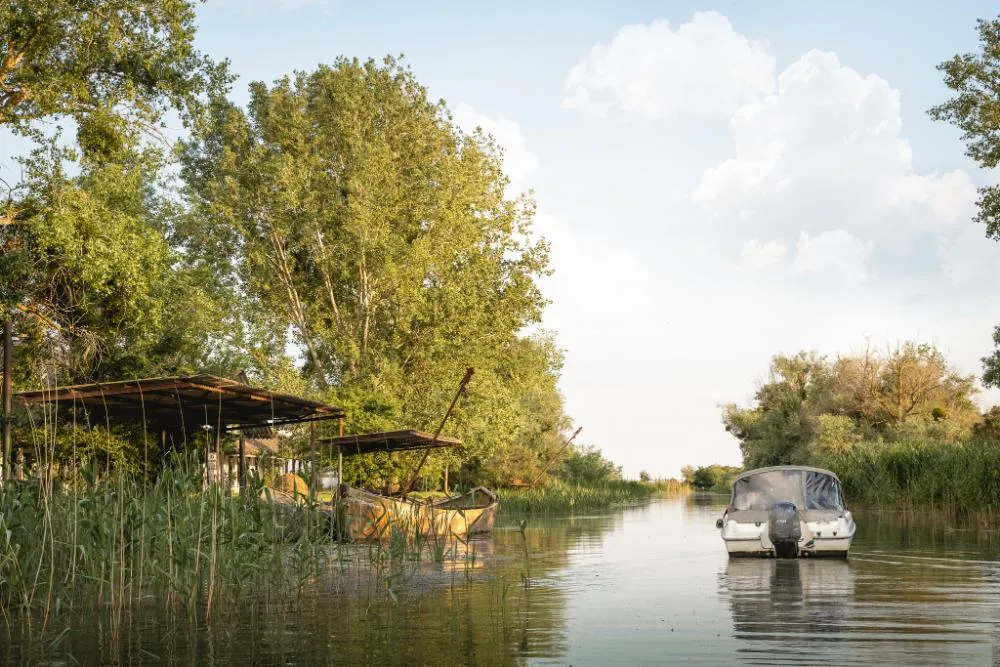
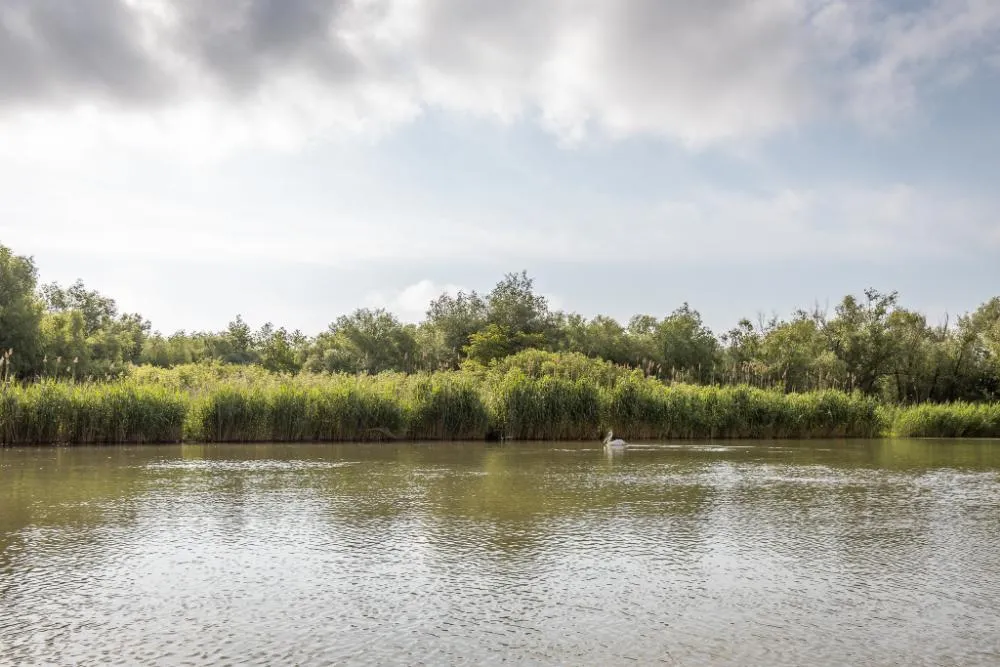
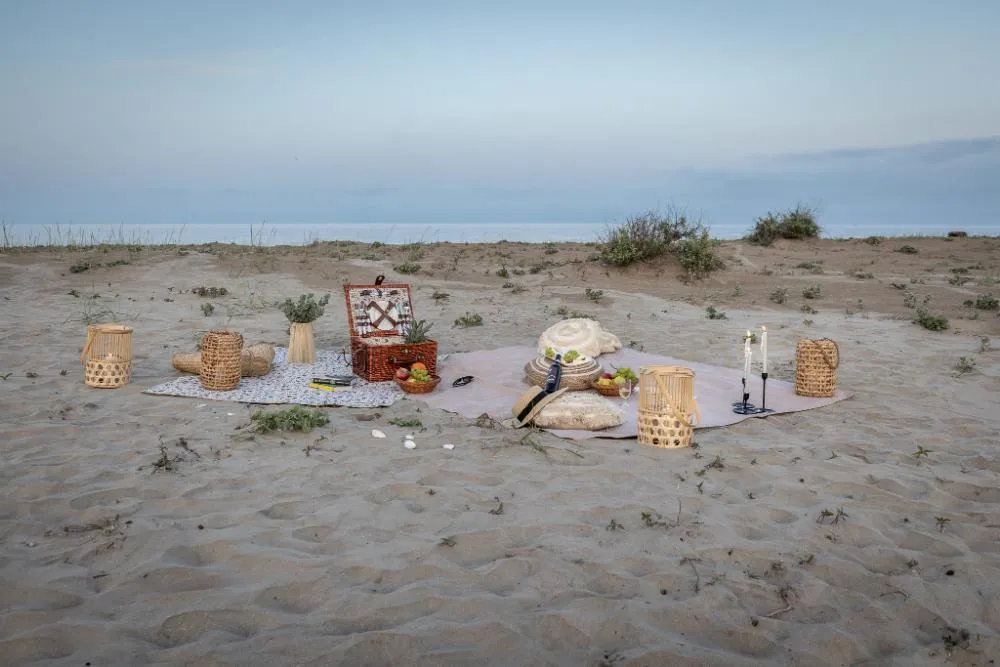
Curiosities about the Danube Delta
Also as information about the Danube Delta, we present you some curiosities worth knowing:
- It is the only delta in the world to have been declared a Biosphere Reserve. In other words, it is a true museum of biodiversity;
- Here we find the most compact reed bed in the world;
- The surface area of the Danube Delta is steadily increasing from year to year;
- The lowest population density in Romania;
- The only town in the Danube Delta is Sulina. It is the only port city in the country with an outlet to both the Danube and the Black Sea. It is also the town at the lowest altitude in the country and, as you have already learned, the sunniest town;
- The Letea Forest is the largest sand forest in Europe and the oldest nature reserve in Romania;
- Of the three arms, the St. George’s arm is the oldest of the Danube. It was formed before our era and is over 100 km long;
- The only sand forests in Romania are in the Danube Delta. These are the Letea and Caraorman forests, with their famous lianas and sand dunes that cover considerable areas. The Letea Forest, famous for its wild horses, is one of the oldest nature reserves in the country;
- There is the largest colony of common pelicans in Europe;
- We meet the biggest snake in the country. Nicknamed the ‘Dobrogean dragon’, the snake can reach 2 metres in length;
- In 1980, the biggest fish in the Danube Delta was caught in Sf. Gheorghe, a morun weighing almost 890 kg. In fact, the moron is the largest freshwater fish in the world, and is frequently found in the Danube Delta. It reaches this impressive size because it can live up to 100 years.
All the information about the Danube Delta found above will help you understand the importance of this destination, but you will best discover this natural paradise on the spot.
Don’t forget to take into account the whole natural ecosystem that exists here and to contribute to the protection of the places you visit in the Danube Delta.
Photo source: Dolphin Camping

